- Tips for Strengthening Seedlings in an Enclosed Greenhouse
- 1. Provide Adequate Ventilation
- 2. Gradually Harden Off Seedlings
- 3. Provide Adequate Light
- 4. Water Properly
- 5. Provide Support
- 6. Use Organic Fertilizers
- 7. Monitor Temperature and Humidity
- 8. Avoid Overcrowding
- 9. Regularly Inspect for Pests and Diseases
- 10. Harden Off Seedlings Before Transplanting
- Choosing the Right Seeds
- 1. Start with reputable suppliers
- 2. Consider the climate and growing conditions
- 3. Look for disease-resistant varieties
- 4. Consider your goals and preferences
- 5. Check the seed viability
- 6. Read the seed packet information
- Providing Adequate Light
- 1. Natural Light
- 2. Artificial Lighting
- 3. Light Duration
- 4. Light Distance
- 5. Light Distribution
- 6. Light Reflection
- Controlling Temperature and Humidity
- 1. Temperature Control
- 2. Humidity Control
- 3. Monitoring and Adjusting
- Ensuring Proper Watering
- 1. Monitor soil moisture:
- 2. Water at the right time:
- 3. Use the correct watering technique:
- 4. Water at the base:
- 5. Water deeply:
- 6. Avoid overwatering:
- 7. Mulch the soil:
- 8. Adjust watering according to growth stage:
- 9. Avoid using cold water:
- 10. Keep a watering schedule:
- Using Organic Fertilizers
- 1. Compost
- 2. Manure
- 3. Fish Emulsion
- 4. Seaweed Extract
- 5. Worm Castings
- 6. Organic Liquid Fertilizers
- 7. Tips for Application
- Pruning and Thinning
- Benefits of Pruning Seedlings
- Techniques for Pruning Seedlings
- Preventing Pests and Diseases
- Gradual Acclimatization to Outdoor Conditions
- Steps for gradual acclimatization:
- “Question-Answer”
- What are some tips for strengthening seedlings in an enclosed greenhouse?
- How can I prevent diseases in seedlings in an enclosed greenhouse?
- What is the ideal temperature and lighting conditions for strengthening seedlings in an enclosed greenhouse?
- What type of potting mix should I use for seedlings in an enclosed greenhouse?
- Should I use stakes or trellises for seedlings in an enclosed greenhouse?
- Can I transplant the seedlings directly from an enclosed greenhouse to the garden?
- “Video” Learn How to Grow Vegetables in a Greenhouse With These Helpful Tips!
Starting your own plants from seeds can be a rewarding and cost-effective way to kickstart your garden. But when it comes to growing seedlings in an enclosed greenhouse, there are a few key considerations to keep in mind. In this article, we will explore tips and techniques to help strengthen your seedlings and ensure their successful growth in a controlled environment.
One important aspect of nurturing strong seedlings is providing them with the proper amount of light. In a greenhouse setting, it can be tempting to rely solely on natural sunlight, but this may not always be sufficient, especially during the early stages of growth. Supplemental lighting can make a significant difference in the strength and vigor of your seedlings, helping them develop sturdy stems and vibrant foliage.
Another factor to consider is temperature control within the enclosed greenhouse. While greenhouses can provide a sheltered and controlled environment, they can also trap heat and humidity, which can lead to weak and leggy seedlings. To combat this, it is important to monitor the temperature and ventilation in your greenhouse. Providing adequate airflow and regulating the temperature can help prevent your seedlings from becoming overly elongated and weak.
In addition to light and temperature, the nutrition of your seedlings should not be overlooked. Ensuring a nutrient-rich growing medium is essential for strong and healthy plants. Consider using a high-quality potting mix or create your own blend with compost and organic matter. Regularly fertilizing your seedlings with a balanced liquid fertilizer can also provide them with the necessary nutrients for robust growth.
By following these tips and techniques, you can strengthen your seedlings and give them the best chance at thriving in an enclosed greenhouse. With proper lighting, temperature control, and nutrition, you can set your seedlings up for success and enjoy a bountiful garden in no time.
Tips for Strengthening Seedlings in an Enclosed Greenhouse
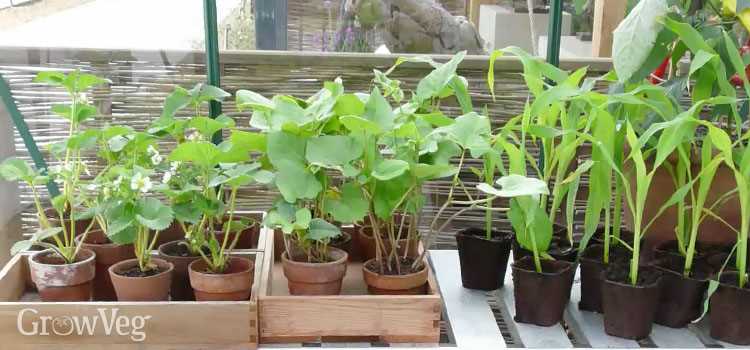
1. Provide Adequate Ventilation
One of the key factors in strengthening seedlings in an enclosed greenhouse is providing adequate ventilation. Proper ventilation helps in reducing humidity levels and preventing the growth of mold and diseases. It also encourages the development of stronger stems and leaves by stimulating airflow. Make sure to open windows and use fans to maintain a good airflow within the greenhouse.
2. Gradually Harden Off Seedlings
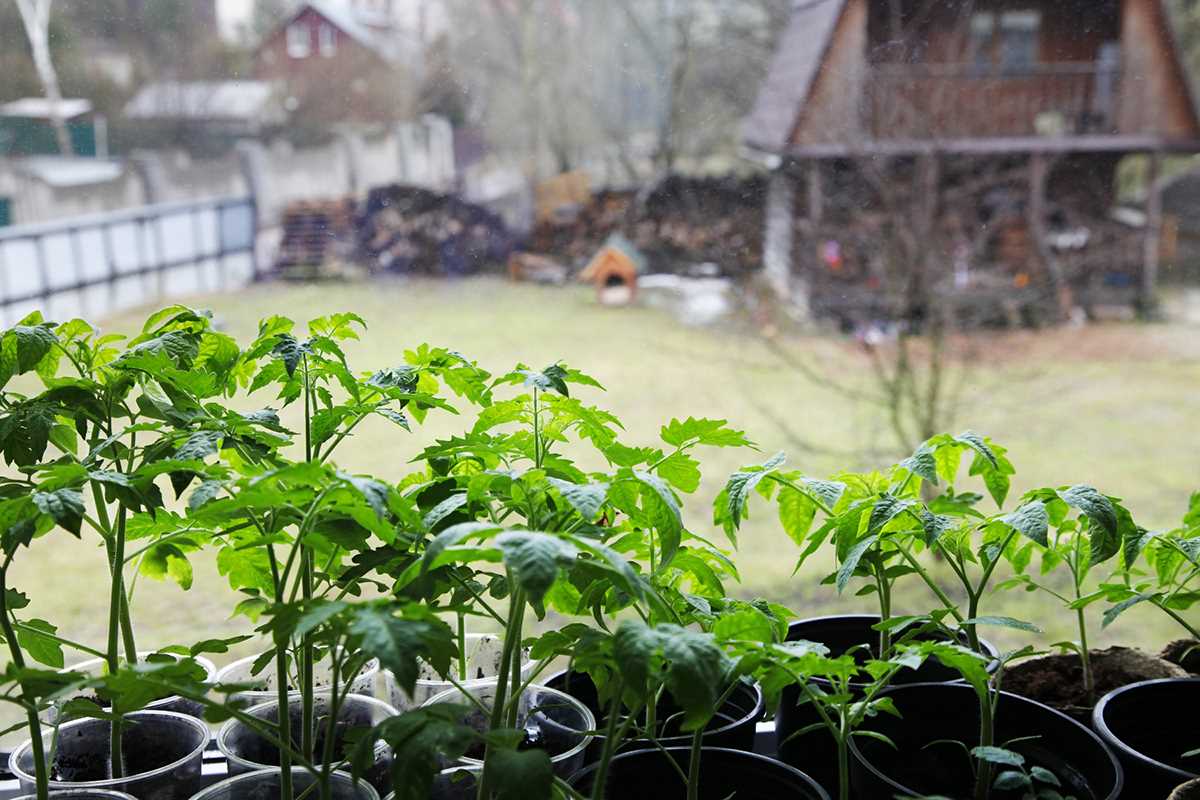
Hardening off is the process of gradually acclimating seedlings to outdoor conditions. This step is crucial for strengthening seedlings before transplanting them into the garden. Slowly expose seedlings to outdoor conditions by placing them outside for a few hours each day, gradually increasing the duration over the course of a week or two. This will help seedlings adjust to temperature fluctuations and wind, preparing them for the outdoor environment.
3. Provide Adequate Light
Seedlings need ample light to grow strong and healthy. Ensure that your enclosed greenhouse receives enough natural light or supplement it with artificial grow lights. Position the lights at an appropriate distance to avoid leggy and weak growth. A good rule of thumb is to provide seedlings with approximately 14-16 hours of light per day.
4. Water Properly
Proper water management is essential for strengthening seedlings. Overwatering can lead to damp conditions, encouraging the growth of mold and diseases. On the other hand, underwatering can result in weak and stunted growth. Water seedlings when the top inch of the soil feels dry, and make sure to water thoroughly, allowing excess water to drain away. Avoid wetting the foliage to prevent diseases.
5. Provide Support
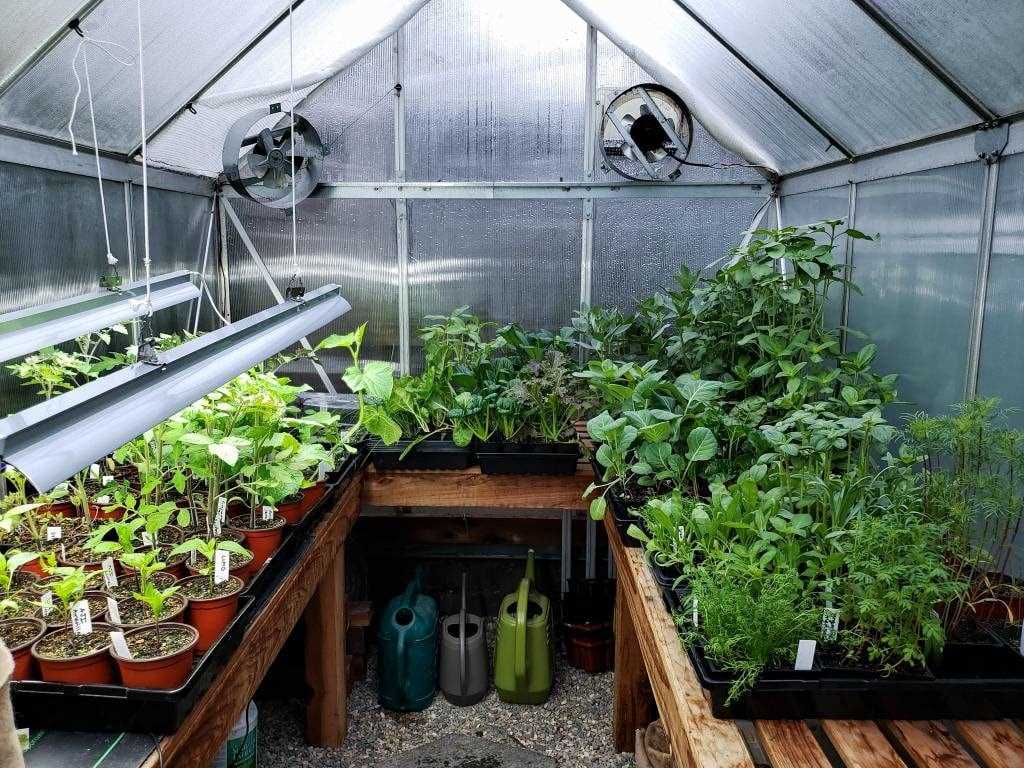
As seedlings grow, they may need support to prevent them from bending or toppling over. Use stakes or small trellises to provide support for tall or vine-like seedlings. This will help promote upright growth and strengthen the stems. Be gentle while tying the seedlings to the supports to avoid damaging them.
6. Use Organic Fertilizers
Organic fertilizers can provide essential nutrients to seedlings and help strengthen their overall growth. Incorporate well-rotted compost or organic fertilizers into the potting mix before sowing the seeds or apply them as a liquid feed once the seedlings have developed a few sets of leaves. Organic fertilizers promote healthy root development and enhance the resilience of seedlings.
7. Monitor Temperature and Humidity
Regularly monitor the temperature and humidity levels within the enclosed greenhouse. Keep the temperature within the optimum range for the specific seedlings you are growing, as extreme temperatures can weaken the plants. Maintain an appropriate humidity level by using vents and fans or by misting the seedlings if necessary. This will help create an environment where seedlings can thrive and strengthen.
8. Avoid Overcrowding
It is important to give seedlings enough space to grow and develop properly. Overcrowding seedlings can lead to competition for resources, resulting in weak and stunted growth. Transplant or thin out seedlings as necessary to provide adequate space for each plant to grow. This will allow for better air circulation and prevent the spread of diseases.
9. Regularly Inspect for Pests and Diseases
Regularly inspect your seedlings for any signs of pests or diseases. Early detection can help prevent the spread of infestations and save your seedlings. Remove any affected plants promptly and take appropriate action to control the pests or diseases. Keeping a clean and well-maintained greenhouse can help minimize the risk of infestations.
10. Harden Off Seedlings Before Transplanting
Before transplanting seedlings from the greenhouse to the garden, make sure to harden them off properly. Gradually expose them to the outdoor environment for a week or two, following the same process as mentioned earlier. This will help seedlings adjust to the conditions in your garden and prevent transplant shock, ensuring their successful growth and strengthening.
Choosing the Right Seeds
When it comes to growing strong and healthy seedlings in an enclosed greenhouse, choosing the right seeds is crucial. The quality of the seeds you choose will directly impact the success of your greenhouse garden.
1. Start with reputable suppliers
One of the first steps in choosing the right seeds is to find reputable suppliers. Look for companies or nurseries that have a good reputation for providing high-quality seeds. Reading reviews and asking for recommendations from experienced gardeners can help you make an informed decision.
2. Consider the climate and growing conditions
Take into account the climate and growing conditions of your local area. Different seeds have different requirements for temperature, sunlight, soil, and humidity. Make sure to choose seeds that are suitable for the conditions in your greenhouse, as this will increase the chances of success.
3. Look for disease-resistant varieties
Some seeds are bred to be resistant to certain diseases and pests. To ensure the health and vitality of your seedlings, look for disease-resistant varieties. This can help prevent the spread of diseases and reduce the need for chemical treatments.
4. Consider your goals and preferences
Think about what you want to grow and your personal preferences. Do you want to grow vegetables, flowers, or herbs? Are you interested in heirloom varieties or modern hybrids? Consider your goals and preferences when selecting seeds to ensure that you enjoy the fruits of your labor.
5. Check the seed viability
Before purchasing seeds, it’s important to check their viability. Most reputable seed suppliers will provide information on the germination rate of their seeds. Look for seeds with a high germination rate to increase the chances of successful seedling growth.
6. Read the seed packet information
Finally, carefully read the information provided on the seed packet. This will give you important details about the specific requirements of the seeds, such as how deep to sow them, when to start indoors, and how long they take to germinate. Following the instructions on the seed packet will give your seedlings the best chance of thriving.
By following these tips and choosing the right seeds, you’ll be well on your way to growing strong and healthy seedlings in your enclosed greenhouse.
Providing Adequate Light
Light is an essential factor for the growth and development of seedlings in an enclosed greenhouse. Without sufficient light, seedlings may become weak and unable to withstand transplanting or harsh weather conditions.
1. Natural Light
Position your enclosed greenhouse in a location where it can receive maximum sunlight throughout the day. This will provide the seedlings with the necessary light intensity and spectrum for healthy growth.
2. Artificial Lighting
In addition to natural light, you may need to supplement with artificial lighting, especially during cloudy days or when the natural light is inadequate. Consider using full-spectrum fluorescent or LED grow lights for your seedlings.
3. Light Duration
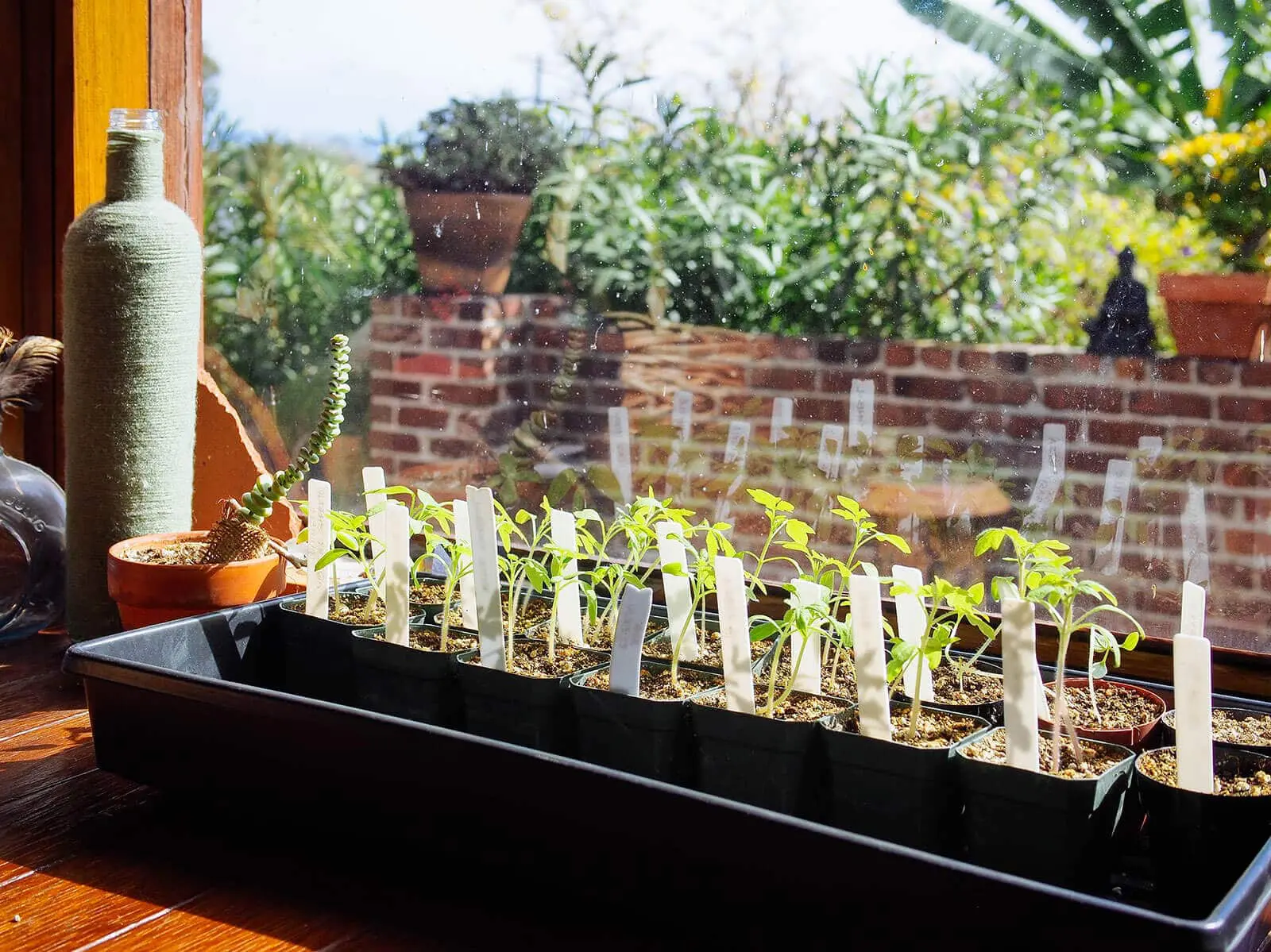
Seedlings require an adequate duration of light exposure to promote strong and sturdy growth. Typically, seedlings need around 14-16 hours of light per day. Use a timer to ensure consistent light exposure for your seedlings.
4. Light Distance
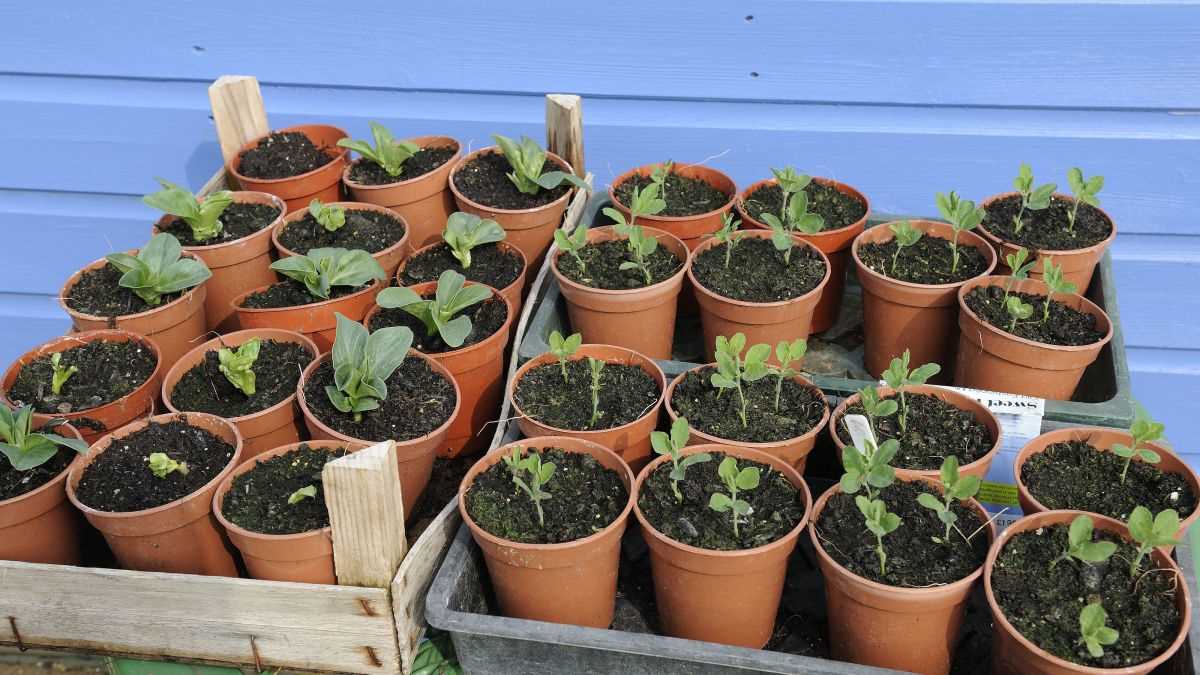
Place the artificial grow lights at an appropriate distance from the seedlings. The distance should be adjusted based on the light intensity and the specific light requirements of the plant species you are growing. Too close can burn the seedlings, while too far can result in weak and elongated stems.
5. Light Distribution
Avoid shading your seedlings with other plants or objects within the greenhouse. Ensure even distribution of light by spacing out your seedlings properly and avoiding overcrowding.
6. Light Reflection
Maximize light reflection by lining the walls and floor of your enclosed greenhouse with reflective materials, such as white plastic or aluminum foil. This will help redirect and amplify the available light, ensuring it reaches all parts of the seedlings.
By providing adequate light to your seedlings in an enclosed greenhouse, you can ensure their healthy growth and increase their chances of successful transplantation and thriving in the outdoors.
Controlling Temperature and Humidity
Proper control of temperature and humidity is crucial for the healthy growth of seedlings in an enclosed greenhouse. Here are some tips and techniques to help you maintain optimal conditions for your plants:
1. Temperature Control
Seedlings require specific temperature ranges for optimal growth. Here’s how you can control the temperature in your enclosed greenhouse:
- Install a thermostat to monitor and maintain the temperature within the desired range.
- Use heaters during colder months to provide warmth to the seedlings.
- Install ventilation fans or windows to allow for air circulation and prevent overheating.
2. Humidity Control
Maintaining proper humidity levels is essential for seedling development. Here’s what you can do to control humidity:
- Install a humidifier or misting system to increase humidity if it is too low.
- Use dehumidifiers or fans to reduce humidity if it is too high.
- Water seedlings from the bottom to avoid excessive moisture on the leaves and reduce the risk of fungal diseases.
3. Monitoring and Adjusting
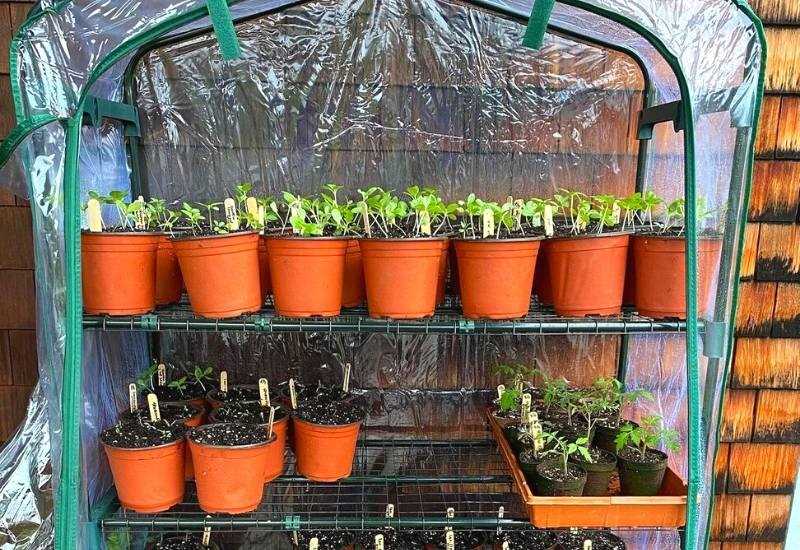
Regular monitoring of temperature and humidity levels is necessary to ensure they remain within the optimal range. Here are some additional tips:
- Use a hygrometer and thermometer to measure humidity and temperature levels.
- Adjust temperature and humidity settings as needed based on the growth stage of the seedlings and external weather conditions.
- Keep a record of temperature and humidity levels to identify patterns and make necessary adjustments.
By controlling the temperature and humidity levels in your enclosed greenhouse, you can provide the ideal conditions for your seedlings to thrive and grow into healthy plants.
Ensuring Proper Watering
Proper watering is essential for the health and growth of seedlings in an enclosed greenhouse. Here are some tips to ensure your seedlings receive the right amount of water:
1. Monitor soil moisture:
Regularly check the moisture level of the soil using a moisture meter or by sticking your finger about an inch into the soil. If it feels dry, it’s time to water the seedlings.
2. Water at the right time:
Water your seedlings in the morning to give them ample time to dry before nightfall. Moist leaves and soil can encourage the growth of diseases and mold.
3. Use the correct watering technique:
Avoid using a strong stream of water, as it can dislodge or damage the delicate seedlings. Instead, use a watering can with a fine rose attachment or a spray bottle to gently water the soil around the seedlings.
4. Water at the base:
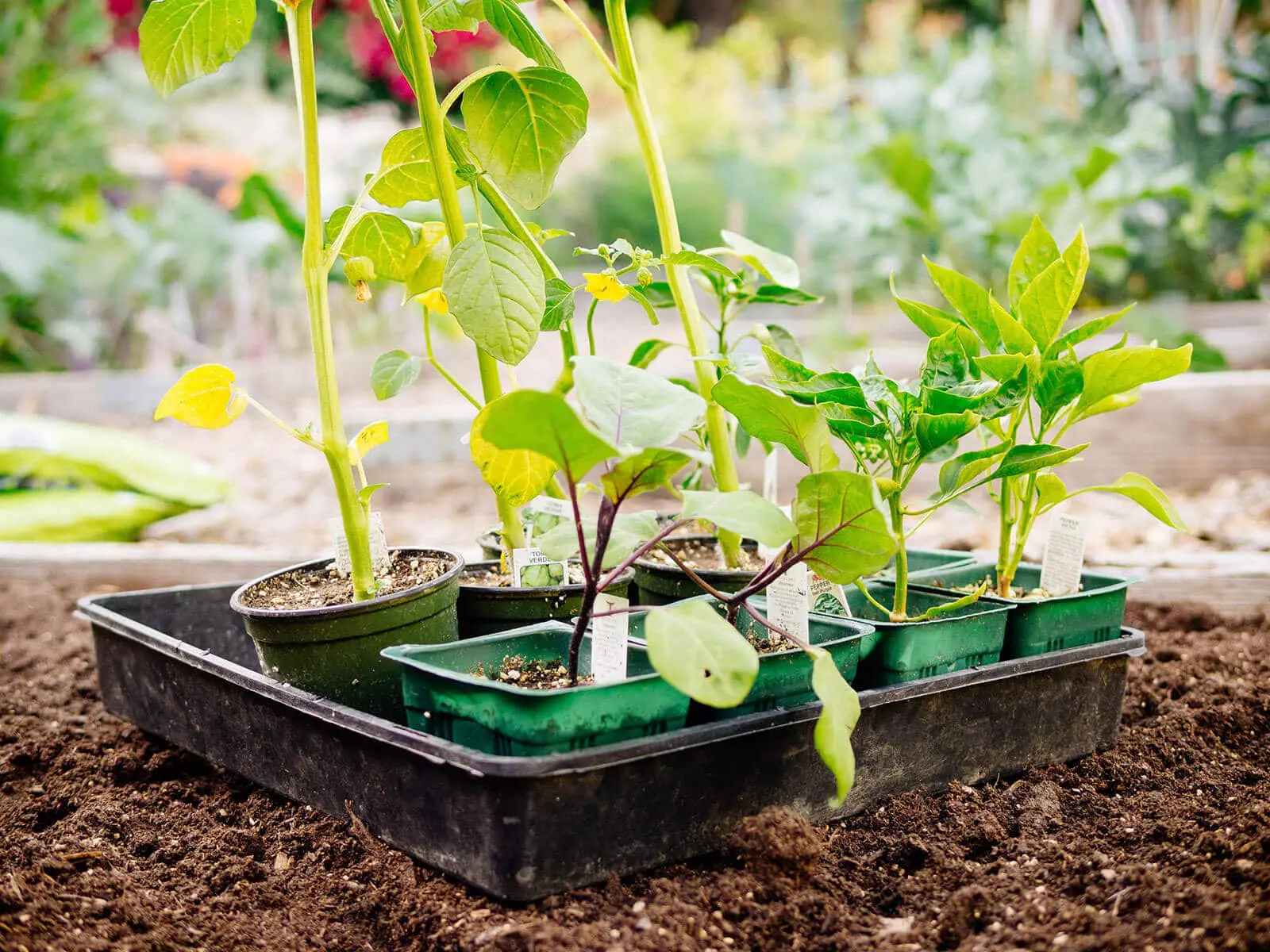
Direct the water towards the base of the seedlings and avoid wetting the leaves. Wet leaves can lead to fungal diseases and rot.
5. Water deeply:
Make sure to water the seedlings deeply, allowing the water to penetrate the root zone. Shallow watering may encourage shallow root growth and make the seedlings more susceptible to stress.
6. Avoid overwatering:
While it’s important to provide adequate moisture, overwatering can be just as harmful as underwatering. Overwatering can lead to root rot and other moisture-related problems. Always allow the top inch of soil to dry out before watering again.
7. Mulch the soil:
Applying a layer of organic mulch around the seedlings can help retain moisture in the soil and prevent evaporation. This can reduce the frequency of watering and maintain a more consistent moisture level.
8. Adjust watering according to growth stage:
As the seedlings grow, their water requirements may change. Pay attention to the growth stage and adjust the watering frequency accordingly. Young seedlings may need more frequent watering compared to established plants.
9. Avoid using cold water:
Cold water can shock the seedlings, especially if the greenhouse environment is already cool. Use water at room temperature or allow the water to sit for a while before watering the seedlings.
10. Keep a watering schedule:
Consistency is key when it comes to watering seedlings. Establish a watering schedule and stick to it, making adjustments as necessary based on the moisture level of the soil.
By following these tips and techniques, you can ensure your seedlings receive the right amount of water for healthy growth in your enclosed greenhouse.
Using Organic Fertilizers
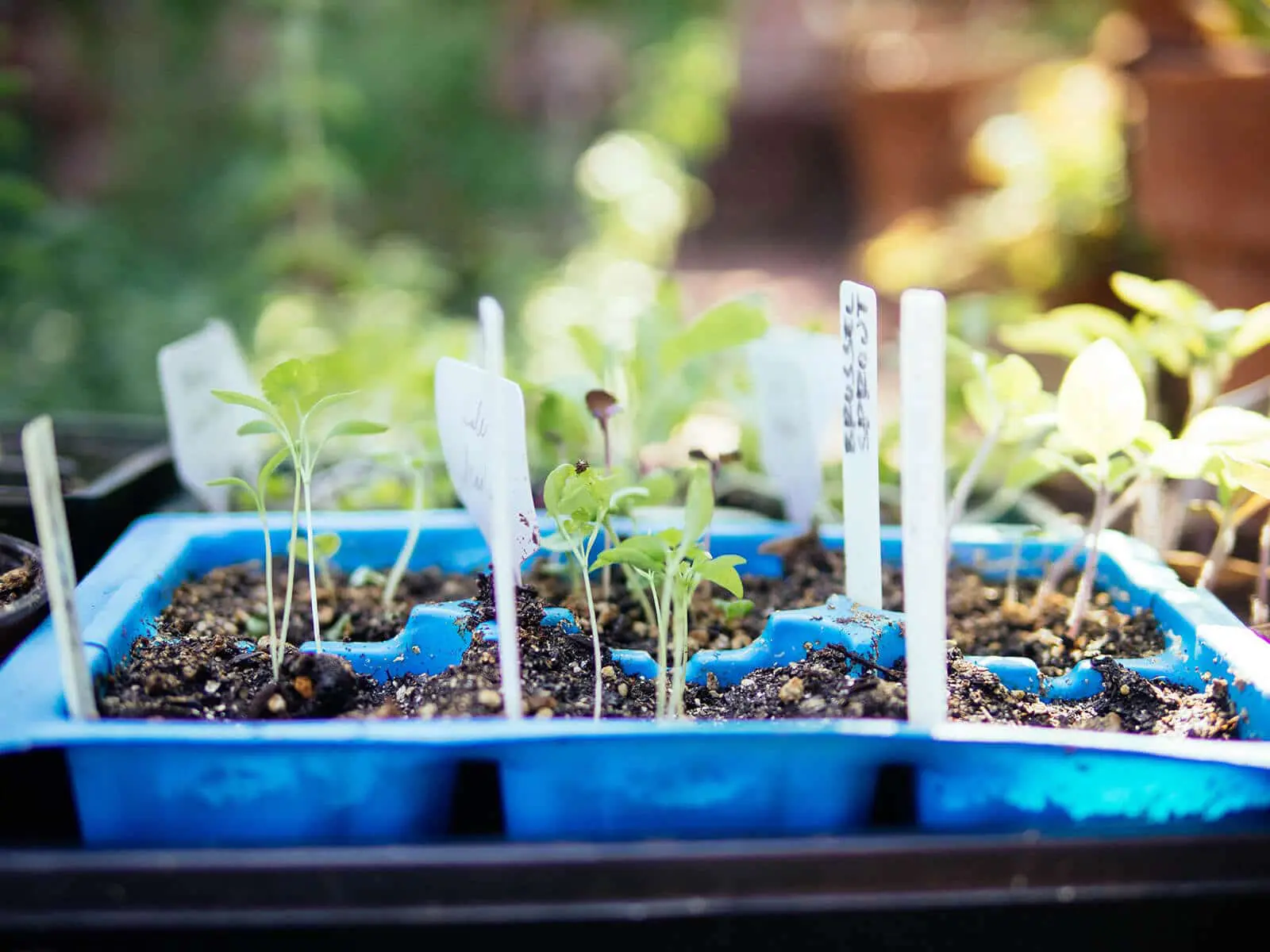
Organic fertilizers are a great option for strengthening seedlings in an enclosed greenhouse. They provide essential nutrients to the plants without the use of synthetic chemicals. Here are some tips on using organic fertilizers in your greenhouse:
1. Compost
Compost is a rich source of organic matter and nutrients. It can be made from kitchen scraps, yard waste, and other organic materials. Spread a layer of compost around the base of the seedlings to provide them with a slow-release source of nutrients.
2. Manure
Animal manure, such as cow or chicken manure, is another excellent organic fertilizer option. Make sure the manure is well-aged and completely composted before use to avoid burning the seedlings. Mix the manure with water to create a diluted liquid fertilizer and apply it to the soil around the seedlings.
3. Fish Emulsion
Fish emulsion is a liquid organic fertilizer made from processed fish. It is high in nitrogen, which is essential for seedling growth. Dilute fish emulsion according to the instructions on the package and apply it to the soil or as a foliar spray on the seedlings.
4. Seaweed Extract
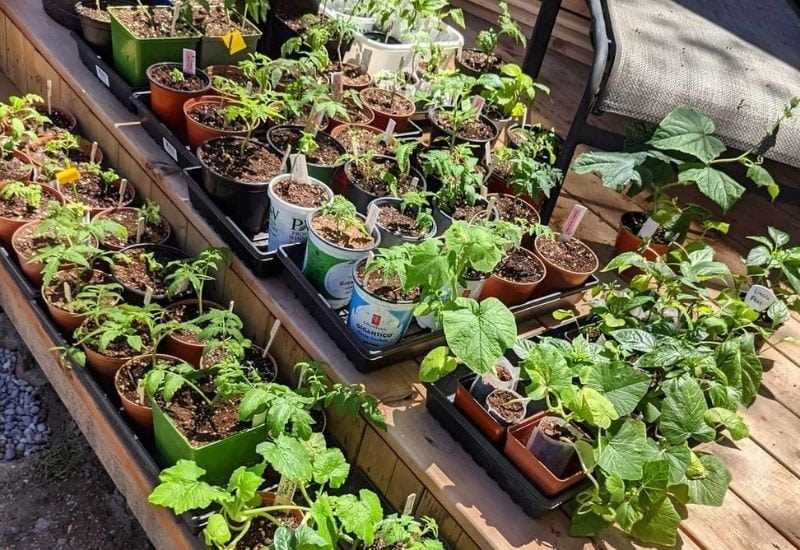
Seaweed extract is derived from seaweed and contains beneficial nutrients and trace elements. It stimulates root growth and helps improve overall plant health. Mix seaweed extract with water according to the instructions and apply it to the soil or spray it on the seedlings.
5. Worm Castings
Worm castings, also known as vermicompost, are rich in beneficial microbes and nutrients. They improve soil structure and provide a slow-release source of nutrients to the seedlings. Mix worm castings into the top layer of soil or use them as a side dressing around the seedlings.
6. Organic Liquid Fertilizers
There are many organic liquid fertilizers available on the market that are specifically formulated for seedlings and greenhouse plants. These fertilizers provide a balanced supply of nutrients and can be applied directly to the soil or as a foliar spray.
7. Tips for Application
- Avoid applying organic fertilizers directly onto the seedlings as it may burn the delicate foliage. Instead, apply the fertilizer around the base of the plants.
- Read the instructions carefully and follow the recommended application rates for each fertilizer.
- Water the seedlings after applying the organic fertilizer to help the nutrients penetrate the soil and reach the roots.
- Monitor the seedlings for any signs of nutrient deficiencies or excesses and adjust the fertilizer application accordingly.
By using organic fertilizers, you can provide your seedlings with the essential nutrients they need for healthy growth while avoiding the use of synthetic chemicals. Experiment with different organic fertilizers to find the ones that work best for your greenhouse and seedlings.
Pruning and Thinning
Pruning and thinning seedlings is an important step in the growth process that helps strengthen plants and promote their overall health and productivity. By removing excess foliage and adjusting the spacing between seedlings, you can ensure optimal growth and reduce competition for resources.
Benefits of Pruning Seedlings
- Improved air circulation: Pruning removes overcrowded leaves and stems, allowing better airflow within the greenhouse. This helps prevent the development of fungal diseases and encourages strong, healthy growth.
- Reduced risk of pests: Pruning can eliminate hiding places for pests and make it easier to spot and remove any infested seedlings. It also reduces the likelihood of pest infestations spreading to neighboring plants.
- Enhanced light penetration: Removing excess foliage allows more light to reach lower leaves and promote photosynthesis. This improves overall plant growth and helps prevent leggy or weak seedlings.
- Promotion of branching: Proper pruning techniques can stimulate the growth of lateral branches, leading to bushier, more robust plants. This can result in increased yields and a more aesthetically pleasing arrangement of seedlings.
Techniques for Pruning Seedlings
To prune seedlings effectively, follow these guidelines:
- Start early: Begin pruning seedlings once they have developed their first few sets of true leaves. Pruning too early can stunt growth, while delaying pruning may result in overcrowding.
- Sanitize your tools: Before pruning, make sure to clean and sanitize your pruning tools to prevent the spread of diseases. This can be done by wiping the blades with a cloth soaked in rubbing alcohol.
- Remove overcrowded foliage: Identify overcrowded areas and selectively remove excess leaves and stems. Focus on removing the weakest or damaged growth to promote stronger, healthier plants.
- Adjust spacing: If seedlings are too close together, thin them out by carefully pulling out the weaker or less desirable plants. Leave adequate spacing between seedlings to allow for healthy growth and prevent competition for resources.
- Monitor and repeat: Regularly monitor the growth of your seedlings and continue to prune as necessary. As seedlings develop, new growth may require pruning to maintain optimal spacing and airflow.
Remember that each plant species may have specific pruning requirements, so it’s important to research and understand the needs of your particular seedlings. By effectively pruning and thinning your seedlings, you can help create a favorable growing environment in your enclosed greenhouse and optimize their chances of thriving.
Preventing Pests and Diseases
When growing seedlings in an enclosed greenhouse, it is important to take precautions to prevent pests and diseases from affecting your plants. Here are some tips to help you keep your seedlings healthy:
- Keep your greenhouse clean: Regularly clean your greenhouse to remove any debris or fallen leaves that may attract pests or harbor diseases.
- Practice good hygiene: Wash your hands thoroughly before handling your seedlings to prevent the spread of diseases. Sanitize your tools and equipment regularly to avoid contaminating your plants.
- Inspect your seedlings: Regularly check your seedlings for any signs of pests or diseases, such as yellowing leaves, wilting, or small holes in the leaves. Early detection can help prevent the spread of infestations.
- Isolate affected plants: If you notice any signs of pests or diseases, promptly isolate the affected plants to prevent the spread to other seedlings.
- Monitor humidity: Keep an eye on the humidity levels in your greenhouse, as high humidity can encourage the growth of fungal diseases. Use fans or ventilation to maintain proper air circulation.
- Use natural pest control methods: Consider using natural pest control methods, such as introducing beneficial insects or using organic pesticides. Avoid using harsh chemicals that can harm your seedlings.
- Rotate your crops: Avoid planting the same type of seedlings in the same location year after year to reduce the risk of soil-borne diseases.
- Provide adequate spacing: Avoid overcrowding your seedlings, as this can create a favorable environment for pests and diseases. Give each plant enough space to grow and ensure proper air circulation.
By following these preventative measures, you can minimize the risk of pests and diseases affecting your seedlings and promote healthy growth in your enclosed greenhouse.
Gradual Acclimatization to Outdoor Conditions
When seedlings have reached a certain stage of growth in your enclosed greenhouse, it is important to gradually acclimate them to the outdoor conditions they will eventually face. This process, known as hardening off, helps seedlings transition from the controlled environment of the greenhouse to the varying and often harsh conditions of the outside world.
Why is gradual acclimatization important?
Seedlings need time to adjust to changes in temperature, humidity, and light levels. If they are simply moved from the greenhouse to the outdoors without this gradual transition, they may go into shock and experience stunted growth or even die. By providing a period of acclimatization, you can help strengthen their tolerance to outdoor conditions and increase their chances of survival.
Steps for gradual acclimatization:
- Choose the right time: Wait until the risk of frost has passed and the weather is relatively mild and stable before starting the acclimatization process. This is usually when daytime temperatures consistently reach 60°F (15°C) or above.
- Start with short exposure periods: Begin by taking the seedlings outside for just a few hours each day, preferably during the warmest part of the day. Choose a sheltered spot that is protected from strong winds.
- Increase exposure time: Gradually increase the amount of time the seedlings spend outdoors each day. Aim for a total of 7-10 days of acclimatization, with the seedlings spending all day and night outside by the end of this period.
- Monitor weather conditions: Be mindful of any drastic changes in weather, such as sudden temperature drops or heavy rainstorms. If necessary, bring the seedlings back inside temporarily to protect them from extreme conditions.
- Protect from direct sunlight: During the early stages of acclimatization, provide shade for the seedlings to protect them from intense sunlight. Gradually remove the shade as they become more accustomed to the outdoor light conditions.
- Water appropriately: Pay attention to the moisture levels in the soil and adjust your watering routine accordingly. Outdoor conditions may require more frequent watering than the controlled environment of the greenhouse.
By following these steps for gradual acclimatization, you can help seedlings develop stronger stems and roots, making them more resilient to outdoor conditions. This process will prepare them for successful transplantation into the garden, where they can continue to thrive and grow.
Remember, each type of plant may have specific needs and preferences, so it’s important to do some research and consult plant-specific resources for the best acclimatization practices.
“Question-Answer”
What are some tips for strengthening seedlings in an enclosed greenhouse?
There are several tips for strengthening seedlings in an enclosed greenhouse. First, make sure to provide adequate ventilation to prevent the build-up of humidity and reduce the risk of diseases. Second, use a high-quality potting mix with good drainage to promote healthy root development. Third, provide the seedlings with the right amount of light and temperature conditions for their specific needs. Fourth, gradually acclimate the seedlings to outdoor conditions by exposing them to natural sunlight and temperature fluctuations before transplanting them into the garden. Finally, provide proper support for the seedlings as they grow, such as using stakes or trellises for taller plants.
How can I prevent diseases in seedlings in an enclosed greenhouse?
Preventing diseases in seedlings in an enclosed greenhouse can be done by following a few key steps. Firstly, ensure proper ventilation to prevent the build-up of humidity, as excess moisture can promote the growth of fungal and bacterial pathogens. Secondly, maintain a clean environment by regularly sanitizing the greenhouse surfaces and tools to prevent the spread of diseases. Thirdly, avoid overwatering the seedlings and provide good drainage to prevent waterlogging, which can also contribute to the development of diseases. Finally, if any signs of diseases are observed, promptly remove and destroy the affected plants to prevent further spread.
What is the ideal temperature and lighting conditions for strengthening seedlings in an enclosed greenhouse?
The ideal temperature and lighting conditions for strengthening seedlings in an enclosed greenhouse depend on the specific plants being grown. However, in general, most seedlings thrive in temperatures between 65-75°F (18-24°C) during the day and slightly cooler temperatures of around 60-65°F (15-18°C) at night. As for lighting, providing 12-16 hours of light per day using fluorescent grow lights or LED lights is typically sufficient for seedling growth. Adjustments to these conditions may be necessary based on the specific needs of different plant species.
What type of potting mix should I use for seedlings in an enclosed greenhouse?
When it comes to selecting a potting mix for seedlings in an enclosed greenhouse, it’s important to choose a high-quality mix that provides good drainage while retaining sufficient moisture. Look for well-balanced mixes that contain a combination of organic matter, like compost, and inorganic components, such as perlite or vermiculite, to ensure proper aeration and nutrition for the seedlings. Additionally, some gardeners prefer to use soilless mixes made from coconut coir or peat moss, as they are lightweight and have good water-holding capacity. Overall, the key is to choose a potting mix that promotes healthy root development and supports the overall growth of the seedlings.
Should I use stakes or trellises for seedlings in an enclosed greenhouse?
Using stakes or trellises for seedlings in an enclosed greenhouse can provide beneficial support, especially for taller plants that may become top-heavy or prone to bending. Stakes are typically used for individual plants and provide vertical support, while trellises are ideal for vining plants and offer a structure for the plants to climb on. Both options can help prevent the seedlings from falling over or getting damaged, allowing for better air circulation and light penetration. Ultimately, the decision to use stakes or trellises will depend on the specific plant species and the desired growth habit.
Can I transplant the seedlings directly from an enclosed greenhouse to the garden?
Transplanting seedlings directly from an enclosed greenhouse to the garden can be risky, as the sudden change in environmental conditions can cause stress and shock to the plants. To avoid this, it is recommended to gradually acclimate the seedlings to outdoor conditions before transplanting them. This can be done by placing the seedlings outside for a few hours each day, gradually increasing the duration over the course of several days or weeks. This process, known as hardening off, helps the seedlings adjust to the natural sunlight, temperature fluctuations, and wind conditions. Once the seedlings have been properly hardened off, they can be safely transplanted into the garden.







